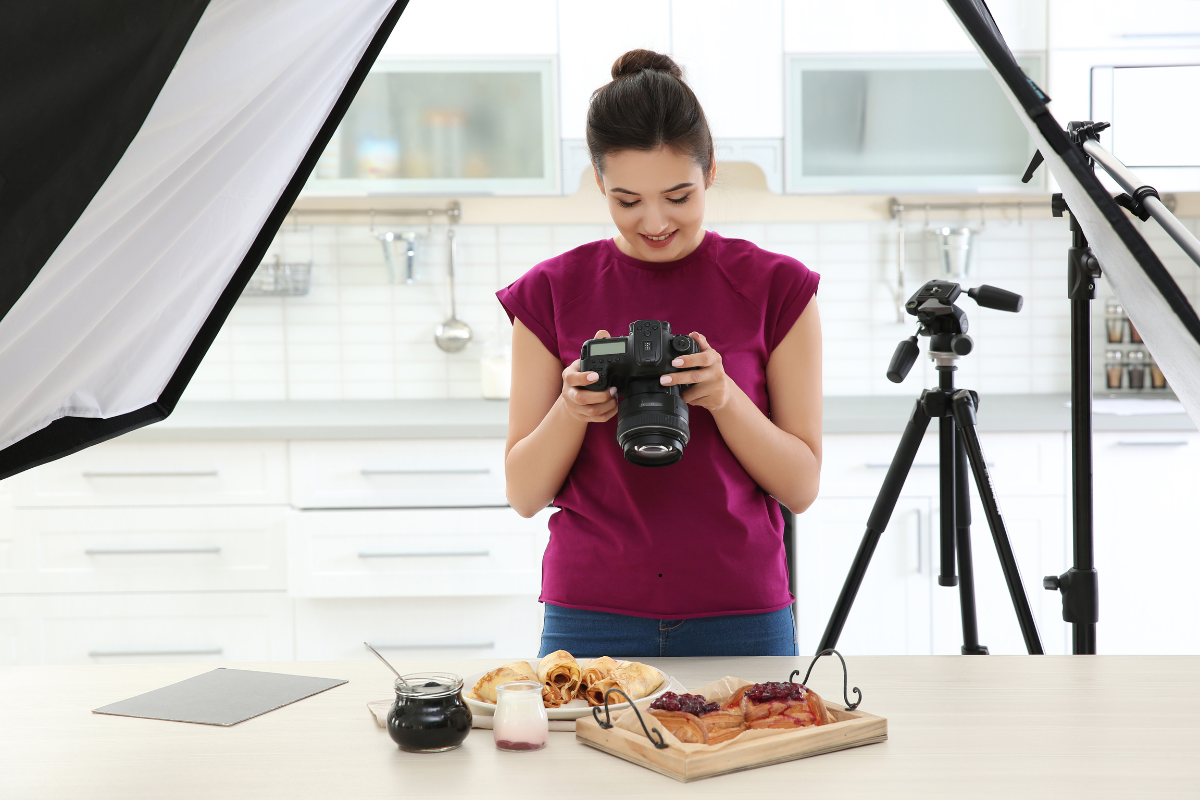How to Setup a Food Blog:
Setting up a food blog can be an exciting and rewarding venture. Whether you’re a culinary professional or a passionate home cook, sharing your recipes, food stories, and kitchen tips can connect you with a community of food lovers from around the world. This guide will walk you through how to setup a food blog, from choosing your niche to promoting your content.
Step 1: Define Your Niche and Audience
The first step in how to setup a food blog is to define your niche and target audience. This will help you focus your content and attract a dedicated readership. Consider the following questions:
- What type of food do you specialize in? (e.g., vegan, desserts, international cuisine)
- Who are your ideal readers? (e.g., beginners, health-conscious eaters, families)
- What unique perspective or expertise can you offer?
A well-defined niche allows you to create focused content that appeals to a specific group of readers, making it easier to build a loyal audience.
Step 2: Choose a Memorable Blog Name
Your blog name is your brand, so it should be catchy, easy to remember, and reflective of your niche. Brainstorm a list of potential names and check their availability as domain names using tools like Namecheap, GoDaddy, or Domain.com. A unique and memorable name will help your blog stand out in a crowded market.
Step 3: Select a Blogging Platform
The next step in how to setup a food blog is choosing a blogging platform. WordPress.org is a popular choice because of its flexibility and extensive features. However, other platforms might be suitable depending on your needs:
- Blogger: Simple and free, but with limited customization options.
- Squarespace: Offers beautiful templates and easy customization but can be more expensive.
- Wix: User-friendly with drag-and-drop functionality, ideal for beginners but with some limitations on scalability.
Step 4: Get Web Hosting and Register Your Domain
If you choose WordPress.org, you’ll need a web hosting service. Some reliable hosting providers include:
- Bluehost: Affordable and beginner-friendly, often recommended by WordPress.
- SiteGround: Known for excellent customer support and fast loading times.
- HostGator: Cost-effective with a variety of plans for different needs.
Once you’ve selected a hosting provider, register your domain name through the hosting service or a separate domain registrar.
Step 5: Install WordPress and Set Up Your Blog
Most hosting providers offer a one-click WordPress installation process. After installing WordPress, you can start setting up your blog:
- Choose a Theme: Select a theme that matches your brand and is mobile-responsive. Popular free themes include Astra and OceanWP, while premium themes like Foodie Pro offer more advanced customization options.
- Install Essential Plugins: Plugins enhance your blog’s functionality. Some essential plugins for food blogs include:
- Yoast SEO: For search engine optimization.
- WP Super Cache: To improve site speed.
- Akismet: To protect against spam comments.
- WP Recipe Maker: For formatting recipes attractively.
Step 6: Customize Your Blog’s Appearance
Personalize your blog to make it visually appealing and reflective of your brand. Here’s how:
- Create a Logo: Use tools like Canva or hire a designer on platforms like Fiverr to create a professional logo.
- Set Up Menus: Organize your content with clear navigation menus that make it easy for readers to find what they’re looking for.
- Add Widgets: Use widgets to display recent posts, popular recipes, and social media links.
Step 7: Create High-Quality Content
Content is king in the blogging world. Start with some foundational posts that introduce you and your blog, and then consistently publish high-quality content. Here are some tips:
- Recipes: Ensure your recipes are well-written, easy to follow, and include high-quality photos. Step-by-step photos can be particularly helpful.
- Blog Posts: Share stories, cooking tips, and food-related experiences to engage your readers.
- Videos: Create cooking tutorials or behind-the-scenes videos to add a dynamic element to your blog.
Step 8: Optimize for SEO
Search engine optimization (SEO) is crucial for attracting organic traffic. Here’s how to optimize your blog:
- Keyword Research: Use tools like Google Keyword Planner to find relevant keywords that your audience is searching for.
- On-Page SEO: Incorporate keywords naturally into your posts, use headings, and optimize images with alt text.
- Backlinks: Build relationships with other bloggers and websites to get backlinks, which can improve your search engine rankings.
Step 9: Promote Your Blog
Promoting your blog is essential for growing your readership. Here are some effective strategies:
- Social Media: Share your posts on platforms like Instagram, Pinterest, Facebook, and Twitter. Each platform has its own strengths, so tailor your content accordingly.
- Email Marketing: Create a mailing list and send regular newsletters to keep your audience engaged.
- Guest Blogging: Write guest posts for other blogs to reach a broader audience.
- Networking: Join food blogging communities, participate in forums, and attend related events to connect with other bloggers and potential readers.
Step 10: Monetize Your Blog
Once you have a steady flow of traffic, you can start monetizing your blog. Here are some ways to earn money from your food blog:
- Ad Networks: Sign up for Google AdSense or Mediavine to display ads on your blog.
- Affiliate Marketing: Promote products you love and earn commissions on sales made through your affiliate links.
- Sponsored Posts: Collaborate with brands for sponsored content, where you get paid to write about their products or services.
- Ebooks and Courses: Sell your own recipes, cookbooks, or cooking classes to generate additional income.
Conclusion
Learning how to setup a food blog involves careful planning and consistent effort, but the rewards can be substantial. By following these steps, you can create a successful food blog that not only shares your culinary creations but also builds a community of food enthusiasts. Remember to stay true to your passion, be authentic, and engage with your readers. Happy blogging!

